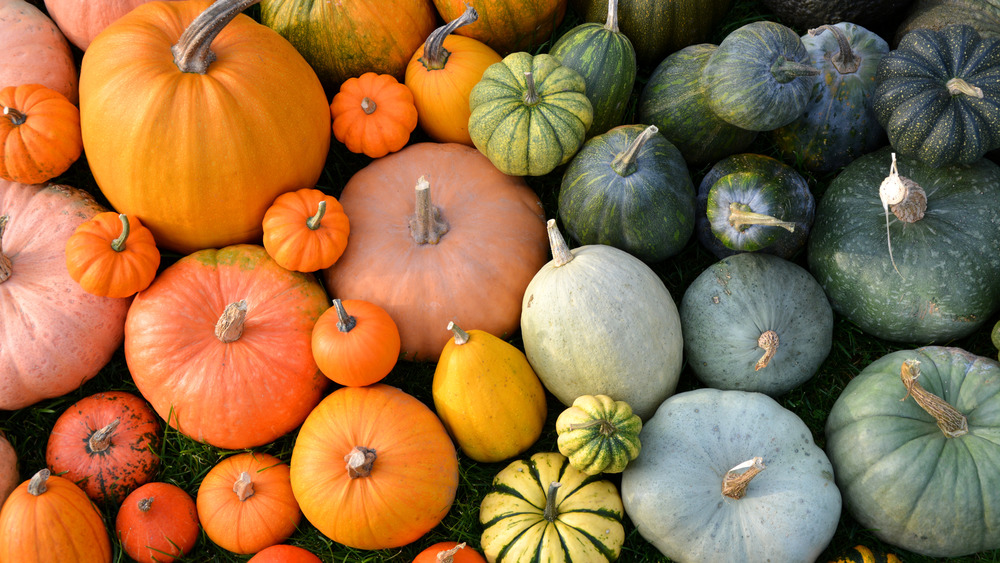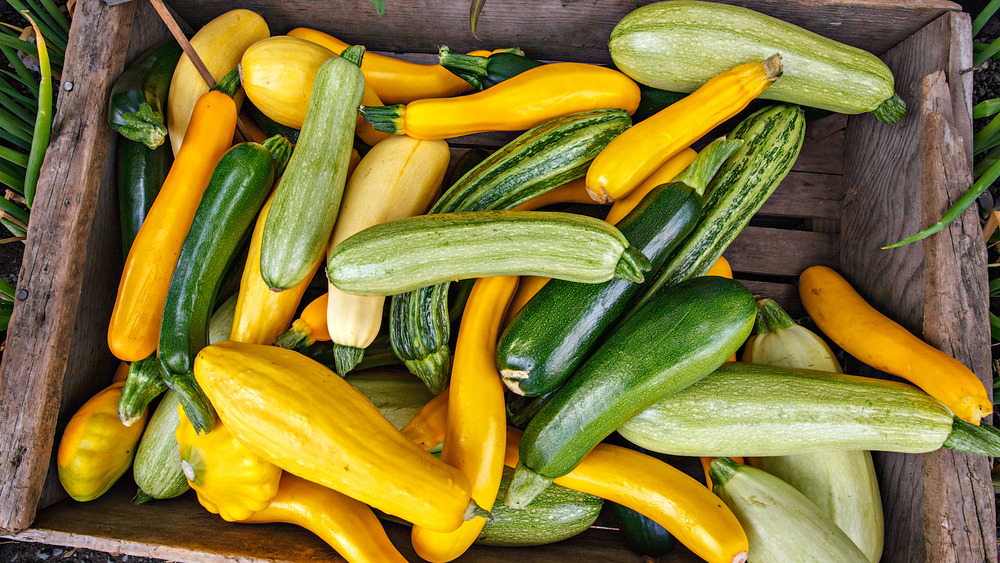The Real Difference Between Summer Squash And Winter Squash
When you think of summer squash, does the zippy, juicy flavor of a grilled zucchini come to mind? And on a winter night, do you find yourself craving the creamy texture of, say, a rich pumpkin soup? If so, you're right on schedule: according to Southern Living, summer and winter are the two main harvest times for squash, yet each season produces wildly different results.
The primary difference between summer and winter squash is maturity. As Chowhound points out, the length of time squash spend on the vine can vary from around 40 to 60 days (for summer squash) up to 120 days (for winter ones). Though both types of squash are gourd-geous, when it comes to telling the difference between the two, their beauty is only skin-deep. That is to say, a summer squash will have tender, thinner skin, while a winter squash has a hard, tough rind to help keep it cozy in colder temperatures.
Different seasons, same great squash
Because summer and winter squash are so different, it makes sense that the way to bring out their natural flavors may mean switching up your cooking method. Summer squashes — like green zucchini, yellow squash, or the adorably named pattypan squash (which look like baby suns or UFO shaped pumpkins) — are great for sautéing or grilling, according to Chowhound and Southern Living. Pumpkins and squash of the acorn, spaghetti, or butternut variety generally benefit from a slower cook because of their thick skin — think roasting and baking. This will ensure you preserve their sweeter flavors, without sacrificing their many health benefits (via Epicurious).
Knowing the key differences between summer and winter squash will help you select the correct fruit (Yes, squash grow from the flowers of a plant and contain seeds, making them technically a fruit, according to Healthline!) and cooking method. Armed with this information, we're sure you'll be able to make delicious, squash-based meals year round.

